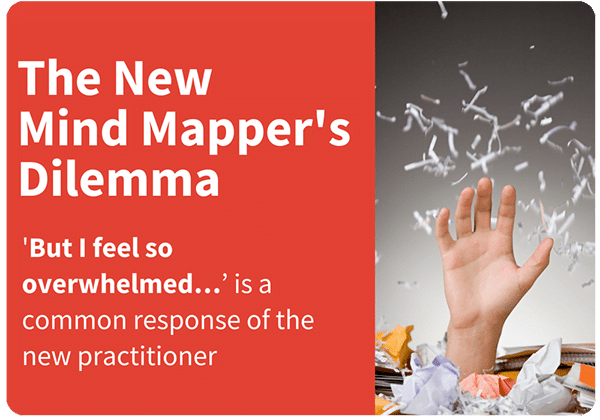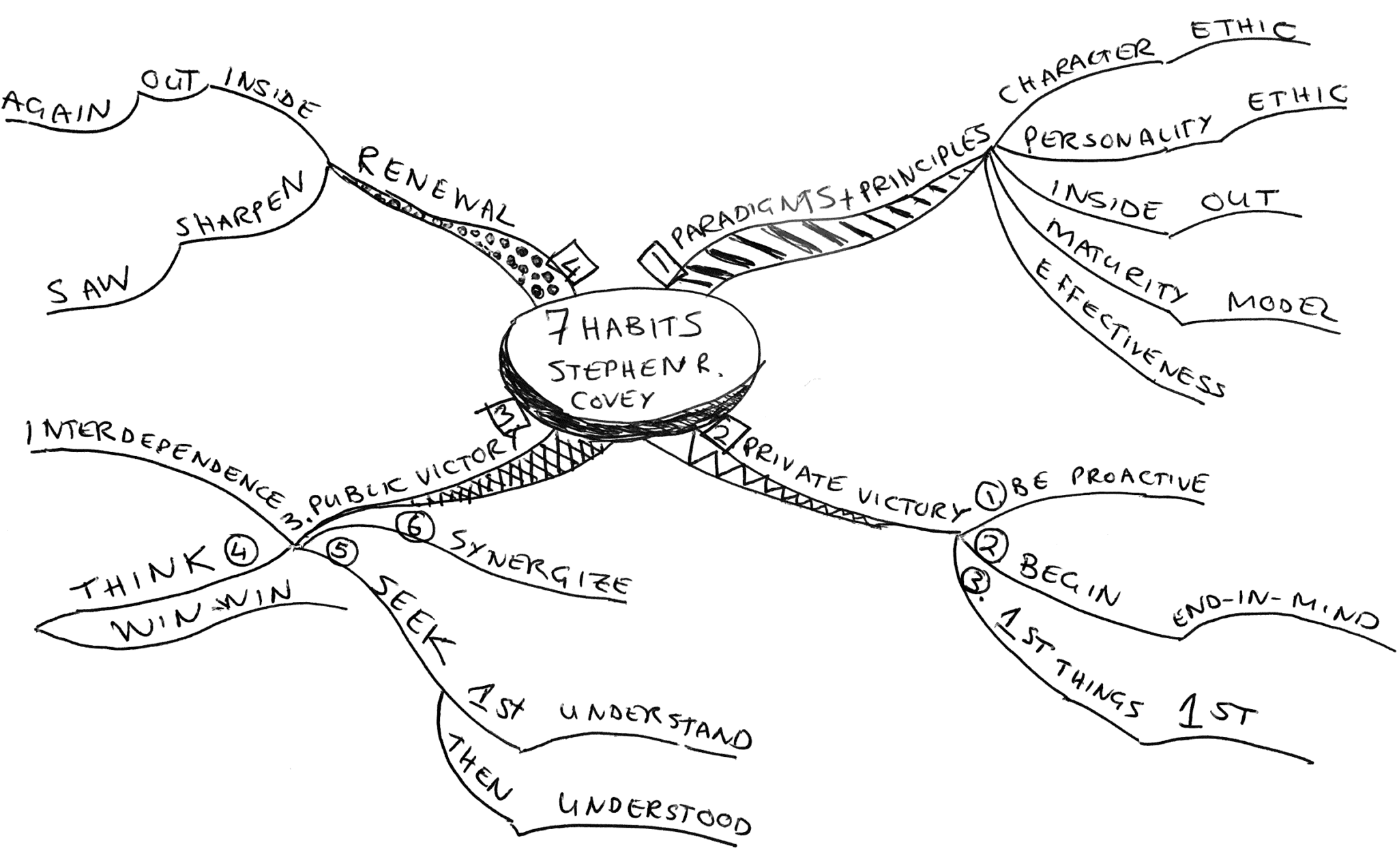So, you’ve just discovered Mind Mapping. You may have been on a course, a workshop, read a book or watched an online video on the marvels of Mind Mapping.
You think Mind Maps are going to change your world and your life. You tell everybody around you about this wonderful new technique called Mind Mapping and how it works the way your brain works.
Yet, a few weeks later you are back to using your old linear ways.
After spending many years promoting Mind Maps and Mind Mapping, I’ve faced this situation numerous times with overwhelmed newbies. This, with a number of variations, is a common trait among new Mind Mappers, or new ‘anything’, for that matter.
Once the initial euphoria and enthusiasm wavers, and reality sets in, you realize that it’s not as easy as it looks.
But why? Those professionals make it look so easy. Beautiful, organic, image-laden, one-word-per-branch Mind Maps are everywhere. ‘But I feel so overwhelmed…’ is a common response of the new practitioner.
This is very much like the Innovator’s Dilemma, as described by Clay Christensen. His work on innovation is one of the best around, and it was published nearly two decades ago.
He mentions something called deliberate strategy, and emerging strategy. This is what happens whenever you try anything new.
You have to put a lot of effort and time into deliberately going in a new direction. Only then will your real strategy emerge. The same applies to a new Mind Mapper. Once you realize that you can use Mind Maps everywhere, but you are using it nowhere, it’s time to put a deliberate strategy in place to get there.
You have to Accept, Apply and, only then, Adapt. Accept what you have discovered about Mind Maps, apply it in practical situations over a period of time, and only then adapt it according to your own preferences.
This is almost like the philosophies taught by the old Kung Fu Masters to their new students. Students first copied their masters. They then did hours and hours of repetitive moves. Only after mastering the moves and applying them in sparring and fights, did they go on to invent their own styles and combinations.
After doing hundreds of Mind Maps, you will discover your own style and applications of Mind Mapping.
But, I suggest you start with just one area first. It can be anything from time management to goal setting, to brainstorming, to running meetings. But, the area I suggest, is note-taking. But not just any note-taking. Start producing Mind Map frameworks of books that you have read, or are about to read.
Here are the steps that I recommend. Apply them and adapt them as you see fit.
- Use pen and paper, or your mind mapping software of choice.
- Choose a book that has a decent structure. A book divided into sections and chapters is great.
- Ensure that the book has a good table of contents. It should preferably have one that reflects the structure of the book.
- The sections become the main branches of your Mind Map.
- The chapters become the sub-branches of your Mind Map.
- Add some images on the branches. If you are using Mind Mapping Software, use the images that come with your software, but searching Google Images is often better. Simply copy and paste the images from Google onto your branches.
You will now have a two-level Mind Map of your book. This will serve as a framework and a visual guide to the book.
This is the contents page of the Seven Habits of Highly Effective People by Stephen R. Covey.
From this table of contents, I created a quick hand-drawn Mind Map using this method.
I used a black pen only, but added some flourishes to the branches to break the visual monotony. You should normally use color whenever you can. I did this simply to illustrate that you can quickly produce a Mind Map Overview of a book, even if you only have pen and paper available.
In addition, there is an interactive mind map created in iMindQ Mind Mapping Online App:
Now, you may not realize the benefits of doing this. But, so many people I meet say that they never revisit a book that they have read, or remember what’s in the book.
By regularly doing this, you will build a set of visual indexes to the books you have read. If used properly, you could instantly recall the contents of many books over time. This skill is more valuable than you may realize, as you will quickly be able to recall the principles of those books, increasing your knowledge and authority of whatever subject interests you.
After you’ve Mind Mapped about 10 books, you may find that this process becomes second nature. You may even start to automatically structure new material into Mind Maps when first faced with it, as your brain actually gets rewired into thinking in terms of associations and hierarchies.
Now, many seasoned Mind Mappers may think that this is too structured, too formulaic, but many great Mind Mappers started this way.
Including me!
About the author
Faizel is the Publisher and Editor of Using Mind Maps Magazine (http://usingmindmaps.com), a free monthly Magazine for your Apple or Android Mobile device bringing you tips, tools, techniques, resources, and opinions of leading Mind Mapping Experts to make you more effective at work, in your business, in your education and in your personal life.






